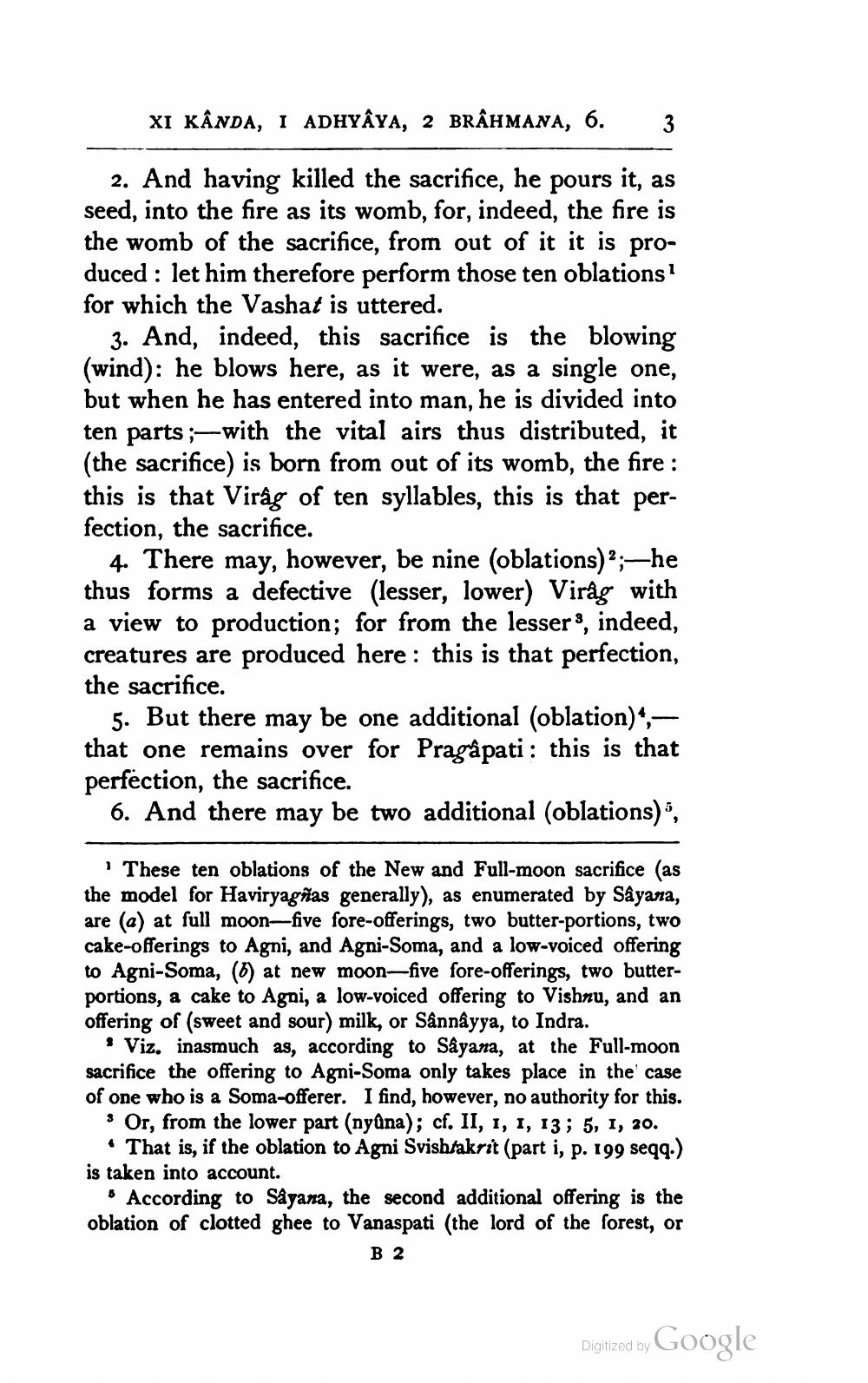________________
XI KÂNDA, I ADHYAYA, 2 BRÂHMANA, 6.
3
2. And having killed the sacrifice, he pours it, as seed, into the fire as its womb, for, indeed, the fire is the womb of the sacrifice, from out of it it is produced : let him therefore perform those ten oblations? for which the Vashat is uttered.
3. And, indeed, this sacrifice is the blowing (wind): he blows here, as it were, as a single one, but when he has entered into man, he is divided into ten parts ;—with the vital airs thus distributed, it (the sacrifice) is born from out of its womb, the fire : this is that Virág of ten syllables, this is that perfection, the sacrifice.
4. There may, however, be nine (oblations)?;—he thus forms a defective (lesser, lower) Virág with a view to production; for from the lessers, indeed, creatures are produced here: this is that perfection, the sacrifice.
5. But there may be one additional (oblation)“, – that one remains over for Pragâpati: this is that perfection, the sacrifice.
6. And there may be two additional (oblations)",
These ten oblations of the New and Full-moon sacrifice (as the model for Haviryagñas generally), as enumerated by Sâyana, are (a) at full moon-five fore-offerings, two butter-portions, two cake-offerings to Agni, and Agni-Soma, and a low-voiced offering to Agni-Soma, (6) at new moon-five fore-offerings, two butterportions, a cake to Agni, a low-voiced offering to Vishnu, and an offering of (sweet and sour) milk, or Sânnâyya, to Indra.
Viz. inasmuch as, according to Sayana, at the Full-moon sacrifice the offering to Agni-Soma only takes place in the case of one who is a Soma-offerer. I find, however, no authority for this.
s Or, from the lower part (nyûna); cf. II, I, I, 13; 5, I, 20.
• That is, if the oblation to Agni Svish/akrit (part i, p. 199 seqq.) is taken into account.
According to Sayana, the second additional offering is the oblation of clotted ghee to Vanaspati (the lord of the forest, or
B 2
Digitized by Google




